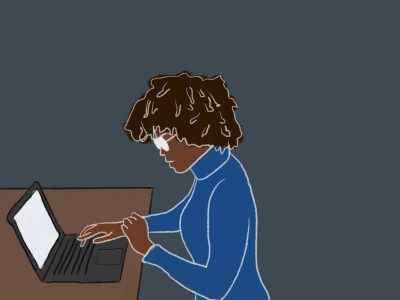Between attending Zoom meetings and wearing face masks, it is not surprising that COVID-19 has limited our ability to communicate with people.
In Zoom calls, it is challenging to display our emotions and enthusiasm. You have to take extra steps — such as speaking with greater inflection — to let your energy shine through.
Additionally, we cannot deliver our messages as effectively while sitting down as we would standing up, which places less pressure on your diaphragms, making your voice clearer. Similarly, an upright position typically translates to greater confidence and control over the conversation.

On camera, we cannot tap into conventional body language to get our messages across, nor can we read others’ subtle body language cues. With limited information to work with, it’s difficult to comprehend the full extent of others’ messages and their receptivity to ours.
We deduce our feelings, attitudes and beliefs about a message more so by a person’s tone and body language than their actual words.
Words, tone and body language account for 7%, 38% and 55% of communication, respectively, according to research conducted by University of California, Los Angeles professor emeritus Albert Mehrabian.
The extra effort we must expend to process such non-verbal cues on Zoom contributes to our Zoom fatigue.
“Our minds are together when our bodies feel we’re not,” said INSEAD associate professor Gianpiero Petriglieri in a BBC article from April of last year, “That dissonance, which causes people to have conflicting feelings, is exhausting. You cannot relax into the conversation naturally.”
As inevitable as they are, pauses are not taken well in virtual meetings.
German academics found that delays on phone calls negatively affect our views of others in a 2014 study. Even pauses of 1.2 seconds influenced people’s perception of the responder, believing them to be less friendly or attentive.
The challenges of communication in online meetings is augmented when we’re able to multitask while attending calls and the inevitable slew of technical difficulties.

Such troubles extend to in-person interactions in the pandemic era.
With face masks covering the majority of a person’s face, it is a lot harder to recognize and read people. Our faces are lenses into our identities, revealing crucial information about our ages, trustworthiness, attitudes and emotional states. Your forehead, eyes and eyebrows can only tell so much.
A September 2020 German study assessed the impact of face masks on the assessment of emotions. A random sample of people of different ages evaluated 12 different faces’ emotional expressions: angry, disgusted, fearful, happy, neutral and sad. The face was either partially obscured by a face mask or fully visible without.
Researchers found that the presence of a mask resulted in lower accuracy and confidence in interpreting the displayed emotions. Certain emotions were also confused — disgust was often mistaken for anger, and other emotions were seen as neutral when they weren’t.When we can only see so much, we must undertake compensatory actions to keep communication effective, such as enhanced body language, hand gestures and verbal communication.
Wearing a face mask while on a Zoom call challenges communication even more — I observed this firsthand in a group interview.
But at the same time, these challenges, while currently burdensome, will advance communication moving forward.
We are progressively becoming increasingly comfortable and skilled with video and written communication. We will hopefully value in-person meetings more and become more mindful of our non-verbal cues, becoming better expressive communicators in the process.
Until then, happy Zooming!



















































































































